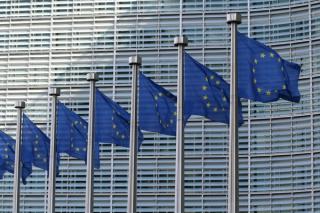
Why social impact must be accounted for like climate and nature
by Clodagh Connolly, Nicola Inge, Andres Schottlaender
View post

In response to worldwide efforts to combat the utilisation of forced labour in supply chains, like the adoption of the Uyghur Forced Labour Prevention Act (UFLPA) in the US, the European Union (EU) is presently drafting a Regulation to forbid the sale of products manufactured through forced labour.
On 5 March 2024, the European Parliament (EP) and the Council reached a provisional agreement on a draft text that now needs to be adopted by both institutions.
Unlike the US UFLPA, this proposed Regulation (article 3) covers all product categories to date and it is not focused on any specific region. So, the ban will apply to any goods produced through forced labour and sold in the EU or exported.
Authorities will be able to investigate companies if they suspect they are selling or exporting products manufactured with forced labour. Based on the proposal of Regulation, every company is potentially affected, regardless of its size and sector.
Investigations could result in a prohibition of producing or selling the specific products within the EU, an order to withdraw those products from the EU market, or to dispose of the products. Fines could also be imposed on non-complying companies.
According to the original Regulation proposal, we can highlight the following triggers:
The current stage of the legislative procedure implies that this Regulation could be adopted soon. The effects of the Regulation will be applicable three years after its entry into force.
Even when there is a three-year delay between the entry into force of the Regulation and its applicability, companies should start preparing to have their due diligence systems ready to be able to identify any risk of forced labour across their supply chains. Some areas companies can focus to prepare are:
Looking at market responses to similar legislation, some initiatives are being developed that can help companies increase their supply chain transparency results. For instance, the Solar Energy Industries Association (SEIA) is one example of the solar industry's response. SEIA has created the Solar Supply Chain Traceability Protocol to assist its members in adhering to the Uyghur Forced Labour Prevention Act. Similar initiatives could be expected in the future as the details of the proposed Regulation are better defined in further stages of the legislative process.
The EU is increasingly developing due diligence legislation. Some examples include the EU Battery Regulation and the EUCSDDD (still under development). Companies can expect similar legislation at national level (like the German Supply Chain Act). Even though requirements across legislations will not always overlap, all of these legal acts focus on requiring companies to enhance their due diligence management systems and to increase transparency, risk identification, assessment, and mitigation across their supply chains. In the case of EUFL Ban, authorities should ultimately determine whether or not a product was manufactured with the use of forced labour. However, when it comes to consequences for companies, “the competent authority shall duly take into account where the economic operator demonstrates that it carries out due diligence on the basis of identified forced labour impact in its supply chain, adopts and carries out measures suitable and effective for bringing to an end forced labour in a short period of time” (article 4.6 in the original proposal).
Together with recent SLR acquisition, RCS Global - the proven leader in responsible sourcing of raw materials - we have been advising industry leaders from the automotive, battery manufacturing, energy and mining industries to align their due diligence management systems and targets to meet or exceed the expectations of the several regulations and standards through various activities and services.
SLR regularly engages with key stakeholders to anticipate and prepare for the impacts of the EUFL Ban on companies and the market, via: